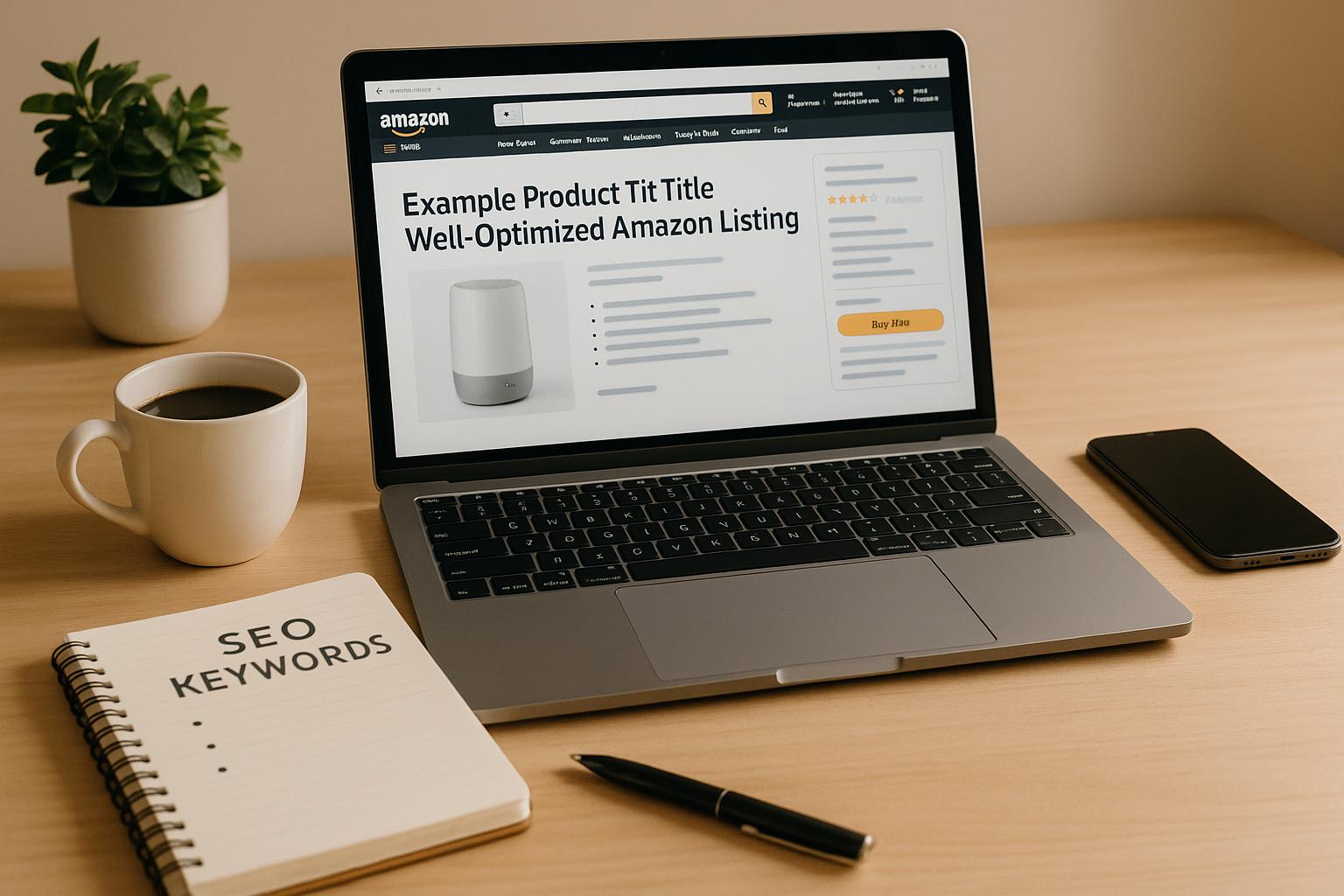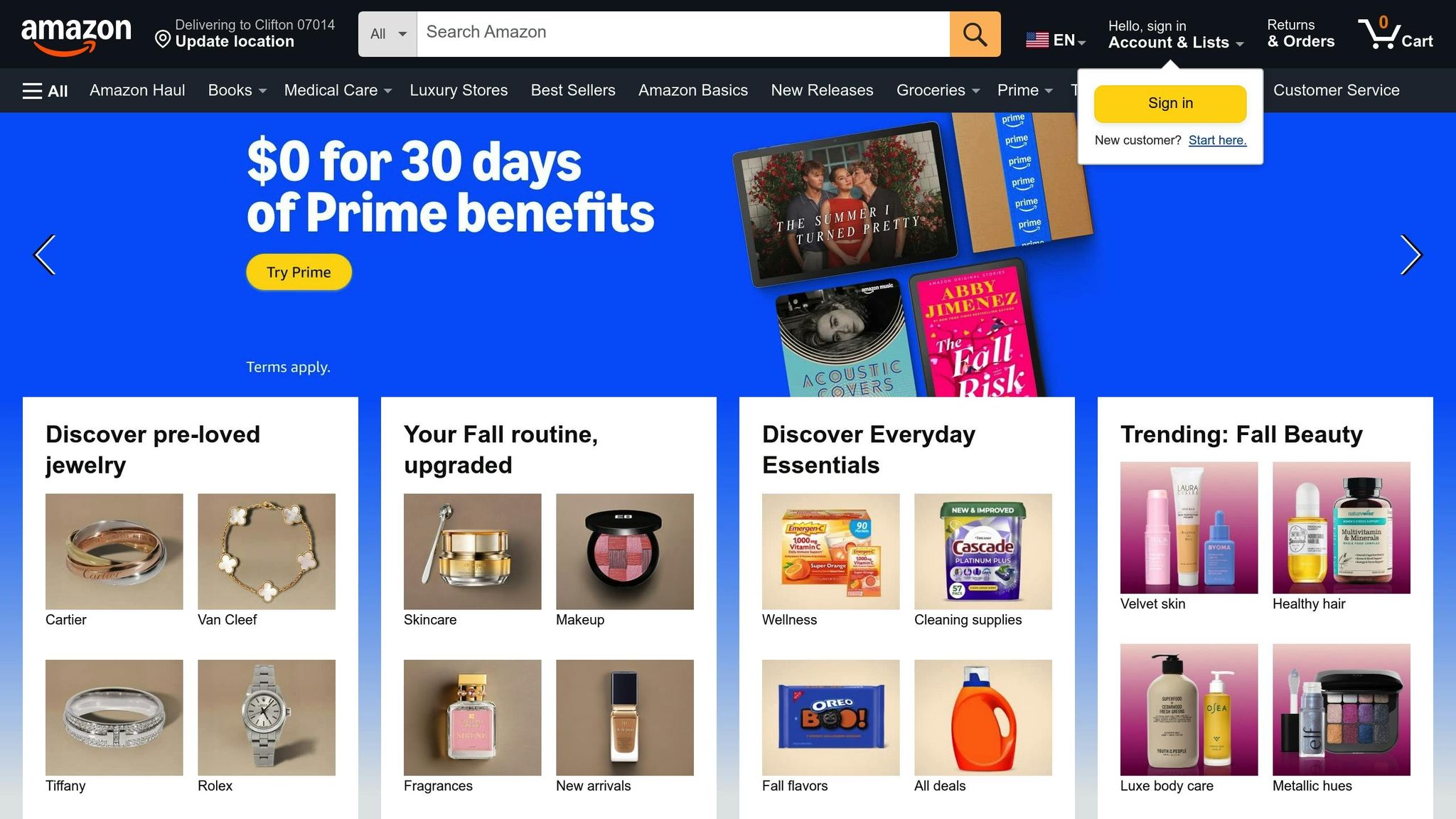
In the competitive world of Amazon eCommerce, visibility is the key to success. Without strong search engine optimization (SEO), even the best products can disappear beneath thousands of competing listings. The good news? Optimizing your Amazon listings for SEO is not only achievable but can drive significant growth when done right.
This guide dives into actionable strategies to help you dominate Amazon search results by leveraging advanced keyword research, structured optimization, and proven best practices. Whether you’re a business owner, eCommerce manager, or marketing professional, this step-by-step approach will empower you to create listings that rank, convert, and scale.
The Foundation of Amazon SEO: Keyword Research

Why Keyword Research Matters
Keywords are the lifeblood of Amazon SEO. These are the search terms customers type into Amazon when looking for products. If your product aligns with their searches but fails to include the right keywords, it won’t appear in the search results. Without visibility, even a stellar product has no chance of success.
Amazon indexes your listing based on the keywords embedded in various elements of your content – such as the title, bullets, description, backend fields, and A+ content. Effective keyword research ensures you’re targeting terms that balance traffic volume, relevance, and competition.
Step 1: Identifying Relevant Keywords
The Reverse ASIN Method
The reverse ASIN method is a powerful way to uncover the keywords your competitors rank for. Here’s how it works:
- Search for Your Product’s Main Keyword: Start by finding a primary keyword that is highly relevant to your product, has high search volume, and aligns with customer intent. For example, if you’re selling a gym backpack, the main keyword could be "gym backpack."
- Identify Top Competitors: Search your main keyword on Amazon and select the top-performing listings that are most relevant to your product. These are your competitors.
- Perform a Reverse ASIN Lookup: Use tools like Helium 10’s Cerebro to extract a list of keywords for each competitor. Filter for keywords where these competitors rank within the top 10 organic positions, as these are likely driving the majority of their sales.
Step 2: Filtering and Prioritizing Keywords
Once you have a raw list of thousands of keywords, the next step is refining it into a master keyword list:
- Filter by Search Volume: Sort keywords from highest to lowest search volume.
- Check for Relevance: Ensure the keyword accurately describes your product. Irrelevant keywords bring unqualified traffic, which can hurt conversions.
- Analyze Competitor Rankings: Focus on keywords where multiple top competitors rank highly. This indicates the terms’ effectiveness in driving sales.
- Exclude Branded or Irrelevant Terms: Remove keywords tied to competitor brands or unrelated terms to avoid policy violations and wasted traffic.
For instance, if your product is a gym backpack, terms like "travel backpack" or "sports bag" might still be relevant, but "mesh backpack" wouldn’t be if your product is not made with mesh.
Step 3: Strategic Keyword Placement
Title Optimization
The product title is the most critical field for both indexing and capturing buyer attention. Amazon typically allows up to 200 characters in most categories. Here’s how to optimize it:
- Place your main keyword at the beginning (e.g., "Gym Backpack").
- Include secondary keywords naturally.
- Highlight essential features like size, material, or primary use.
- Avoid keyword stuffing; Amazon rewards readability and relevance.
Example:
Brand Name Gym Backpack – Durable and Waterproof Sports Bag with Shoe Compartment, Adjustable Straps, and Multiple Pockets for Men and Women
Crafting Bullet Points
Bullet points provide an opportunity to showcase benefits while incorporating secondary keywords:
- Focus each bullet point on a distinct benefit (e.g., durability, comfort, multi-purpose use).
- Use natural language to make the content scannable and appealing.
- Include medium-volume keywords without overloading.
Description and A+ Content
If you’re not using A+ content (available for brand-registered sellers), the description is your chance to tell a short, persuasive story. Incorporate secondary keywords, but prioritize readability.
For A+ content, use enhanced visuals, infographics, and comparison charts to showcase features. While A+ content doesn’t directly contribute to indexing, it improves conversions, signaling Amazon to boost your listing’s visibility.
Step 4: Leveraging Backend Keywords
Why Backend Keywords Matter
Backend fields allow you up to 2500 characters to include additional variations, synonyms, and misspellings that don’t fit naturally into your customer-facing content. For example:
- Use Spanish translations for relevant terms to capture a broader audience.
- Include common misspellings (e.g., "gym bag" with "gymbag").
- Add niche-specific terms with lower search volumes but high conversion potential.
Tools like Helium 10’s Frankenstein can help you consolidate leftover keywords into backend fields efficiently.
Step 5: Monitoring and Iterating
Amazon SEO isn’t a set-it-and-forget-it task. Keyword trends evolve, customer behavior shifts, and new competitors emerge. Regularly review and update your listing by:
- Tracking Keyword Rankings: Use tools to monitor where your listing ranks for key terms.
- Refreshing Content: Add trending or seasonal keywords to your listing content.
- Adjusting PPC Campaigns: If certain keywords aren’t ranking well organically, consider boosting them with PPC.
Common Mistakes to Avoid
- Keyword Stuffing: Overloading your content with keywords makes it unreadable and unappealing.
- Ignoring Backend Keywords: Missing out on this field limits your indexing potential.
- Neglecting Relevance: Targeting irrelevant keywords leads to poor conversion rates.
- Relying Solely on One Tool: Use multiple tools like Helium 10, Jungle Scout, and Amazon’s Search Query Performance Report for comprehensive insights.
- Not Updating Listings: Outdated content can lead to missed opportunities and reduced relevance.
Key Takeaways
- Start with Competitor Analysis: Use reverse ASIN lookups to identify highly relevant, high-traffic keywords.
- Filter and Refine: Prioritize keywords by relevance, search volume, and competitive viability.
- Strategically Place Keywords: Focus on titles, bullet points, descriptions, and backend search terms for maximum impact.
- Avoid Common Mistakes: Keep your content natural, avoid stuffing, and always monitor performance.
- Iterate Regularly: Refresh your listings quarterly to stay ahead of changing trends.
Final Thoughts
Amazon SEO optimization in 2025 requires precision, strategy, and ongoing effort. By mastering keyword research and placement, you can boost visibility, improve conversions, and scale your business. Whether you’re launching a new product or optimizing an existing one, staying consistent and adaptable will ensure long-term success in the ever-competitive eCommerce landscape. Make every keyword count, and watch your Amazon sales grow!
Source: "How to Do Amazon SEO & Listing Optimization | 2025 Detailed Guide" – Upscale Valley, YouTube, Sep 5, 2025 – https://www.youtube.com/watch?v=K9Y8C3O91eI
Use: Embedded for reference. Brief quotes used for commentary/review.
